
Witchcraft (also called witchery or spellcraft) broadly means the practice of, and belief in, magical skills and abilities that are able to be exercised by individuals and certain social groups. Witchcraft is a complex concept that varies culturally and societally; therefore, it is difficult to define with precision[1] and cross-cultural assumptions about the meaning or significance of the term should be applied with caution. Witchcraft often occupies a religious, divinatory or medicinal role, and is often present within societies and groups whose cultural framework includes a magical world view.
Concept
The concept of witchcraft and the belief in its existence have existed throughout recorded history. They have been present or central at various times, and in many diverse forms, among cultures and religions worldwide, including both "primitive" and "highly advanced" cultures,and continue to have an important role in many cultures today. Scientifically, the existence of magical powers and witchcraft are generally believed to lack credence and to be unsupported by high quality experimental testing, although individual witchcraft practices and effects may be open to scientific explanation or explained via mentalism and psychology.Historically, the predominant concept of witchcraft in the Western world derives from Old Testament laws against witchcraft, and entered the mainstream when belief in witchcraft gained Church approval in the Early Modern Period. It posits a theosophical conflict between good and evil, where witchcraft was generally evil and often associated with the Devil and Devil worship. This culminated in deaths, torture and scapegoating (casting blame for human misfortune),and many years of large scale witch-trials and witch hunts, especially in Protestant Europe, before largely ceasing during the European Age of Enlightenment. Christian views in the modern day are diverse and cover the gamut of views from intense belief and opposition (especially from Christian fundamentalists) to non-belief, and in some churches even approval. From the mid-20th century, witchcraft – sometimes called contemporary witchcraft to clearly distinguish it from older beliefs – became the name of a branch of modern paganism. It is most notably practiced in the Wiccan and modern witchcraft traditions, and no longer practices in secrecy.
The Western mainstream Christian view is far from the only societal
perspective about witchcraft. Many cultures worldwide continue to have
widespread practices and cultural beliefs that are loosely translated
into English as "witchcraft", although the English translation masks a
very great diversity in their forms, magical beliefs, practices, and
place in their societies. During the Age of Colonialism, many cultures across the globe were exposed to the modern Western world via colonialism, usually accompanied and often preceded by intensive Christian missionary activity (see "Christianization").
Beliefs related to witchcraft and magic in these cultures were at times
influenced by the prevailing Western concepts. Witch hunts,
scapegoating, and killing or shunning of suspected witches still occurs
in the modern era,with killings both of victims for their supposedly magical body parts, and of suspected witchcraft practitioners.
Suspicion of modern medicine due to beliefs about illness being due
to witchcraft also continues in many countries to this day, with tragic healthcare consequences. HIV/AIDS and Ebola virus disease are two examples of often-lethal infectious disease epidemics whose medical care and containment
has been severely hampered by regional beliefs in witchcraft. Other
severe medical conditions whose treatment is hampered in this way
include tuberculosis, leprosy, epilepsy and the common severe bacterial Buruli ulcer.
Public healthcare often requires considerable education work related to epidemology and modern health knowledge in many parts of the world where belief in witchcraft prevails, to encourage effective preventive health measures and treatments, to reduce victim blaming, shunning and stigmatization, and to prevent the killing of people and endangering of animal species for body parts believed to convey magical abilities.
Etymology and definitions
The word "witchcraft" derives from the Old English wiccecræft, a compound of "wicce" ("witch") and "cræft" ("craft").
In anthropological terminology, witches differ from sorcerers in that they don't use physical tools or actions to curse; their maleficium
is perceived as extending from some intangible inner quality, and one
may be unaware of being a witch, or may have been convinced of his/her
nature by the suggestion of others.
This definition was pioneered in a study of central African magical beliefs by E. E. Evans-Pritchard, who cautioned that it might not correspond with normal English usage.
Historians of European witchcraft have found the anthropological
definition difficult to apply to European and British witchcraft, where
witches could equally use (or be accused of using) physical techniques,
as well as some who really had attempted to cause harm by thought alone.
European witchcraft is seen by historians and anthropologists as an ideology for explaining misfortune; however, this ideology has manifested in diverse ways, as described below.
Historically the witchcraft label has been applied to practices people believe influence the mind, body, or property of others against their will—or practices that the person doing the labeling believes undermine social or religious order. Some modern commentators
believe the malefic nature of witchcraft is a Christian projection. The
concept of a magic-worker influencing another person's body or property
against their will was clearly present in many cultures, as traditions
in both folk magic and religious magic have the purpose of countering
malicious magic or identifying malicious magic users. Many examples
appear in early texts, such as those from ancient Egypt and Babylonia.
Malicious magic users can become a credible cause for disease, sickness
in animals, bad luck, sudden death, impotence and other such
misfortunes. Witchcraft of a more benign and socially acceptable sort
may then be employed to turn the malevolence aside, or identify the
supposed evil-doer so that punishment may be carried out. The folk magic
used to identify or protect against malicious magic users is often
indistinguishable from that used by the witches themselves.
There has also existed in popular belief the concept of white witches and white witchcraft, which is strictly benevolent. Many neopagan witches strongly identify with this concept, and profess ethical codes that prevent them from performing magic on a person without their request.
Where belief in malicious magic practices exists, such practitioners
are typically forbidden by law as well as hated and feared by the
general populace, while beneficial magic is tolerated or even accepted
wholesale by the people – even if the orthodox establishment opposes it.
Spell casting
Probably the most obvious characteristic of a witch was the ability to cast a spell, "spell" being the word used to signify the means employed to carry out a magical action. A spell could consist of a set of words, a formula or verse, or a ritual action, or any combination of these.
Spells traditionally were cast by many methods, such as by the inscription of runes or sigils on an object to give it magical powers; by the immolation or binding of a wax or clay image (poppet) of a person to affect him or her magically; by the recitation of incantations; by the performance of physical rituals; by the employment of magical herbs as amulets or potions; by gazing at mirrors, swords or other specula (scrying) for purposes of divination; and by many other means.
Necromancy (conjuring the dead)
Strictly speaking, "necromancy" is the practice of conjuring the spirits of the dead for divination or prophecy – although the term has also been applied to raising the dead for other purposes. The biblical Witch of Endor performed it (1 Sam. 28), and it is among the witchcraft practices condemned by Ælfric of Eynsham:Witches still go to cross-roads and to heathen burials with their delusive magic and call to the devil; and he comes to them in the likeness of the man that is buried there, as if he arise from death.
Good and evil
Demonology
In Christianity and Islam, sorcery came to be associated with heresy and apostasy and to be viewed as evil. Among the Catholics, Protestants, and secular leadership of the European Late Medieval/Early Modern period, fears about witchcraft rose to fever pitch and sometimes led to large-scale witch-hunts. The key century was the fifteenth, which saw a dramatic rise in awareness and terror of witchcraft, culminating in the publication of the Malleus Maleficarum but prepared by such fanatical popular preachers as Bernardino of Siena.
Throughout this time, it was increasingly believed that Christianity was engaged in an apocalyptic battle against the Devil and his secret army of witches, who had entered into a diabolical pact. In total, tens or hundreds of thousands of people were executed, and others were imprisoned, tortured, banished, and had lands and possessions confiscated. The majority of those accused were women, though in some regions the majority were men.
"Warlock" is sometimes mistakenly used for male witch.Accusations of witchcraft were often combined with other charges of heresy against such groups as the Cathars and Waldensians.
The Malleus Maleficarum, (Latin for "Hammer of The Witches") was a witch-hunting manual written in 1486 by two German monks, Heinrich Kramer and Jacob Sprenger. It was used by both Catholics and Protestants
for several hundred years, outlining how to identify a witch, what makes a woman more likely than a man to be a witch, how to put a witch on trial, and how to punish a witch. The book defines a witch as evil and typically female. The book became the handbook for secular courts throughout Renaissance Europe, but was not used by the Inquisition, which even cautioned against relying on the work, and was later officially condemned by the Catholic Church in 1490.
In the modern Western world, witchcraft accusations have often accompanied the satanic ritual abuse moral panic. Such accusations are a counterpart to blood libel of various kinds, which may be found throughout history across the globe.
White witches
Throughout the early modern period, the English term "witch" was not exclusively negative in meaning, and could also indicate cunning folk. As Alan McFarlane noted, "There were a number of interchangeable terms for these practitioners, 'white', 'good', or 'unbinding' witches, blessers, wizards, sorcerers, however 'cunning-man' and 'wise-man' were the most frequent."
The contemporary Reginald Scot explained, "At this day it is indifferent to say in the English tongue, 'she is a witch' or 'she is a wise woman'".
Folk magicians throughout Europe were often viewed ambivalently by communities, and were considered as capable of harming as of healing,which could lead to their being accused as "witches" in the negative sense. Many English "witches" convicted of consorting with demons seem to have been cunning folk whose fairy familiars had been demonised;many French devins-guerisseurs ("diviner-healers") were accused of witchcraft, and over one half the accused witches in Hungary seem to have been healers.
Some of the healers and diviners historically accused of witchcraft
have considered themselves mediators between the mundane and spiritual
worlds, roughly equivalent to shamans.
Such people described their contacts with fairies, spirits often involving out-of-body experiences and travelling through the realms of an "other-world".
Beliefs of this nature are implied in the folklore of much of Europe,
and were explicitly described by accused witches in central and southern
Europe. Repeated themes include participation in processions of the
dead or large feasts, often presided over by a horned male deity or a
female divinity who teaches magic and gives prophecies; and
participation in battles against evil spirits, "vampires", or "witches"
to win fertility and prosperity for the community.
Accusations of witchcraft
Éva Pócs states that reasons for accusations of witchcraft fall into four general categories:- A person was caught in the act of positive or negative sorcery
- A well-meaning sorcerer or healer lost their clients' or the authorities' trust
- A person did nothing more than gain the enmity of their neighbours
- A person was reputed to be a witch and surrounded with an aura of witch-beliefs or Occultism
- The "neighbourhood witch" or "social witch": a witch who curses a neighbour following some conflict.
- The "magical" or "sorcerer" witch: either a professional healer, sorcerer, seer or midwife, or a person who has through magic increased her fortune to the perceived detriment of a neighbouring household; due to neighbourly or community rivalries and the ambiguity between positive and negative magic, such individuals can become labelled as witches.
- The "supernatural" or "night" witch: portrayed in court narratives as a demon appearing in visions and dreams.
"Neighbourhood witches" are the product of neighbourhood tensions, and are found only in self-sufficient serf village communities where the inhabitants largely rely on each other. Such accusations follow the breaking of some social norm, such as the failure to return a borrowed item, and any person part of the normal social exchange could potentially fall under suspicion. Claims of "sorcerer" witches and "supernatural" witches could arise out of social tensions, but not exclusively; the supernatural witch in particular often had nothing to do with communal conflict, but expressed tensions between the human and supernatural worlds; and in Eastern and Southeastern Europe such supernatural witches became an ideology explaining calamities that befell entire communities.
Belief in witchcraft continues to be present today in some societies and accusations of witchcraft are the trigger of serious forms of violence, including murder. Such incidents are common in places such as Burkina Faso, Ghana, India, Kenya, Malawi, Nepal and Tanzania. Accusations of witchcraft are sometimes linked to personal disputes, jealousy, and conflicts between neighbors or family over land or inheritance. Witchcraft related violence is often discussed as a serious issue in the broader context of violence against women.
In Tanzania, about 500 older women are murdered each year following accusations against them of witchcraft/or being a witch.
Apart from extrajudicial violence, there is also state-sanctioned violence in some jurisdictions. For instance, in Saudi Arabia practicing 'witchcraft and sorcery' is a crime punishable by death and the country has executed people for this crime in 2011, 2012 and 2014.
Children in some regions of the world, such as parts of Africa, are
also vulnerable to violence related to witchcraft accusations.
Such incidents have also occurred in immigrant communities in the UK, including the much publicized case of the murder of Victoria Climbié.
Contemporary witchcraft
Modern practices identified by their practitioners as "witchcraft" have grown dramatically since the early 20th century. Generally portrayed as revivals of pre-Christian European ritual and spirituality, they are understood to involve varying degrees of magic, shamanism, folk medicine, spiritual healing, calling on elementals and spirits, veneration of ancient deities and archetypes, and attunement with the forces of nature.
The first Neopagan groups to publicly appear, during the 1950s and 60s, were Gerald Gardner's Bricket Wood coven and Roy Bowers' Clan of Tubal Cain. They operated as initiatory secret societies. Other individual practitioners and writers such as Paul Huson also claimed inheritance to surviving traditions of witchcraft.
Wicca
During the 20th century, interest in witchcraft in English-speaking and European countries began to increase, inspired particularly by Margaret Murray's theory of a pan-European witch-cult originally published in 1921, since discredited by further careful historical research.
Interest was intensified, however, by Gerald Gardner's claim in 1954 in Witchcraft Today that a form of witchcraft still existed in England. The truth of Gardner's claim is now disputed too, with different historians offering evidence for or against the religion's existence prior to Gardner.
The Wicca that Gardner initially taught was a witchcraft religion
having a lot in common with Margaret Murray's hypothetically posited
cult of the 1920s.
Indeed, Murray wrote an introduction to Gardner's Witchcraft Today, in effect putting her stamp of approval on it. Wicca is now practised as a religion of an initiatory secret society nature with positive ethical principles, organised into autonomous covens and led by a High Priesthood. There is also a large "Eclectic Wiccan" movement of individuals and groups who share key Wiccan beliefs but have no initiatory connection or affiliation with traditional Wicca. Wiccan writings and ritual show borrowings from a number of sources including 19th and 20th-century ceremonial magic, the medieval grimoire known as the Key of Solomon, Aleister Crowley's Ordo Templi Orientis and pre-Christian religions.Both men and women are equally termed "witches." They practice a form of duotheistic universalism.
Since Gardner's death in 1964, the Wicca that he claimed he was
initiated into has attracted many initiates, becoming the largest of the
various witchcraft traditions in the Western world, and has influenced
other Neopagan and occult movements.
Stregheria
Stregheria is an Italian witchcraft religion popularised in the 1980s by Raven Grimassi, who claims that it evolved within the ancient Etruscan religion of Italian peasants who worked under the Catholic upper classes.
Modern Stregheria closely resembles Charles Leland's controversial late-19th-century account of a surviving Italian religion of witchcraft, worshipping the Goddess Diana, her brother Dianus/Lucifer, and their daughter Aradia. Leland's witches do not see Lucifer as the evil Satan that Christians see, but a benevolent god of the Sun and Moon.
The ritual format of contemporary Stregheria is roughly similar to that of other Neopagan witchcraft religions such as Wicca. The pentagram is the most common symbol of religious identity. Most followers celebrate a series of eight festivals equivalent to the Wiccan Wheel of the Year, though others follow the ancient Roman festivals. An emphasis is placed on ancestor worship.
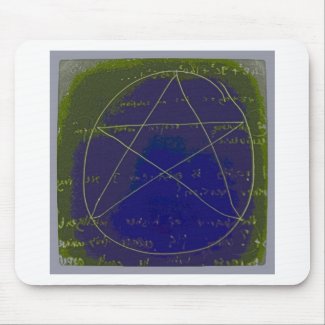

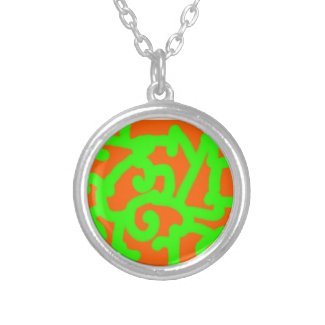

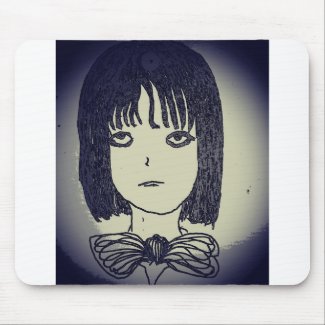
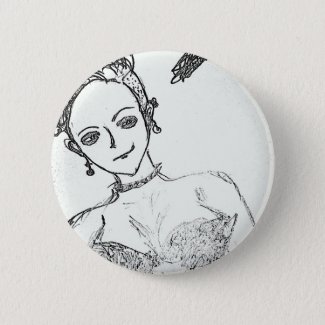


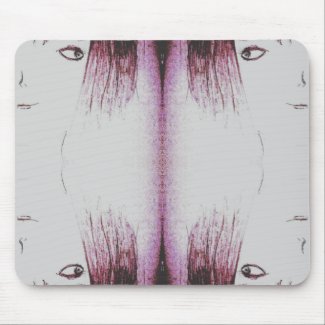






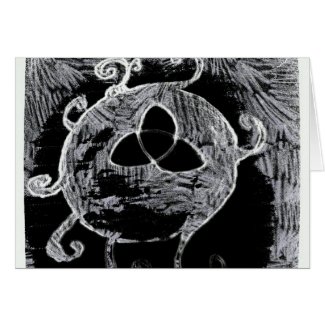
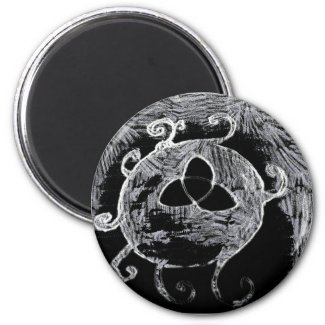


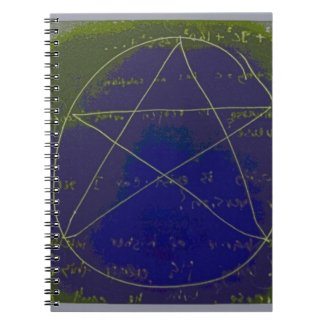
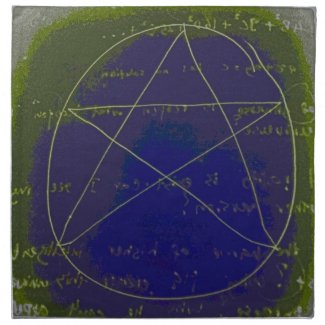


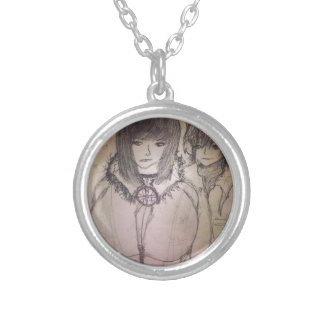
No comments:
Post a Comment